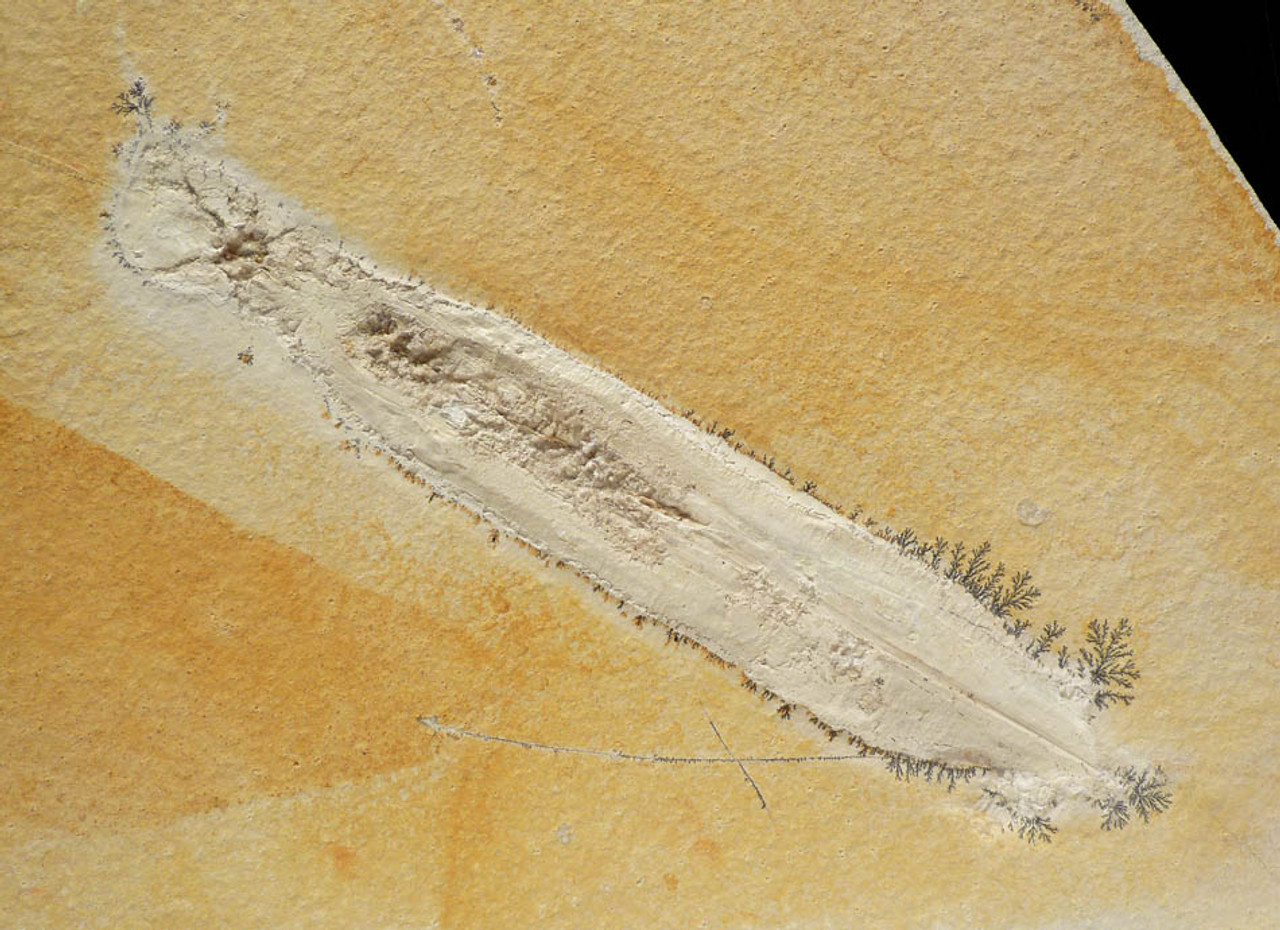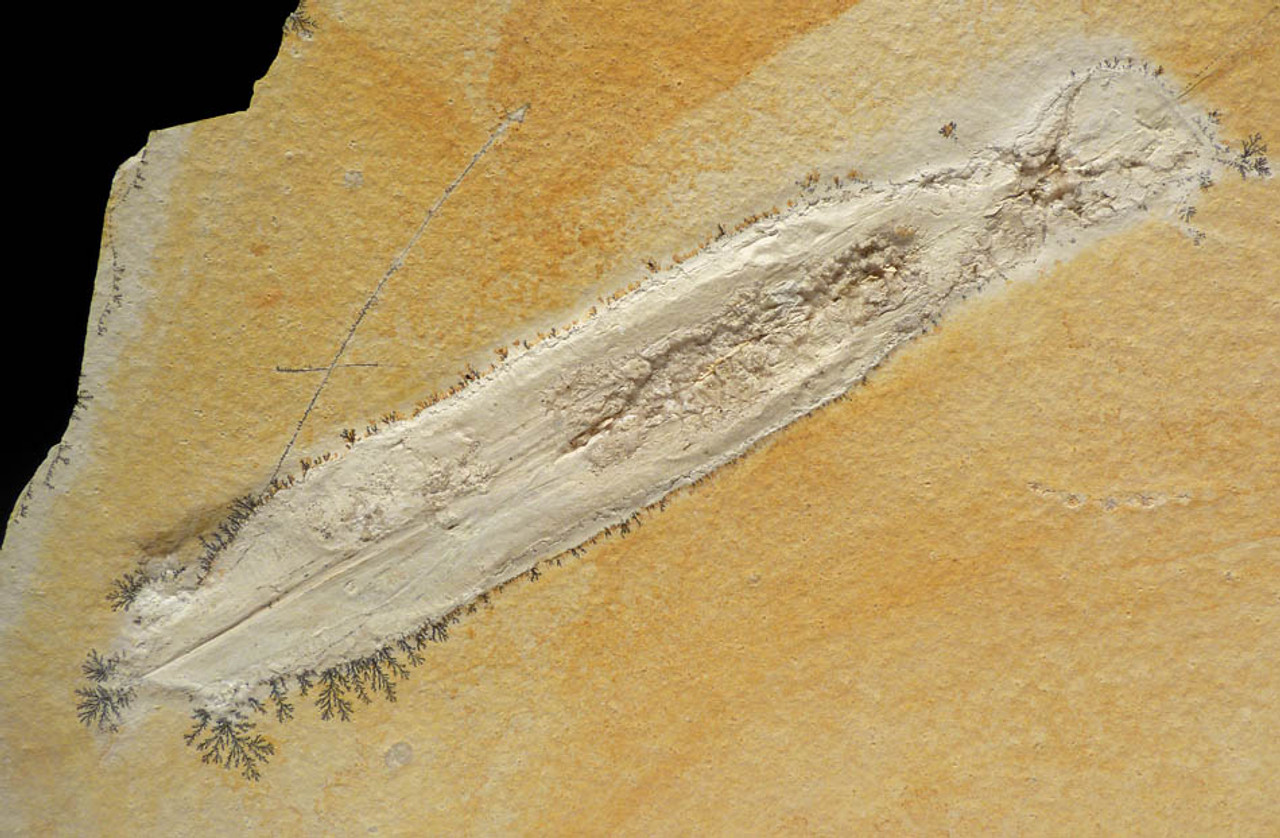Product Description
We are most pleased to offer a true museum-class fossil specimen of an unusually well-preserved example of a large Jurassic Period fossil squid of the species Plesioteuthis sp.. It is complete with a seldom seen presence of preserved soft anatomy and a calcite crystal preservation of the mouth and a perfectly spread, crystallized array of tentacles! The pose is one that prey sees just before being grabbed and devoured by squid like this - gaping mouth and radially-spread tentacles ready to grab and feed. Specimens like this are very scarce in today's market and most often, when one becomes available, it is from an old collection. The plate the fossil is on is also rare in that it is very large with incredible aesthetics from not only the natural coloring but the pattern of mineral dendrites that adorn the rock and the perimeter of the creature. The fossilized body protrudes off the rock plate adding an excellent dimensional aspect. The ink sack is also partially hollow and lined with crystals. The internal test can be seen in the lines running down the body as three-dimensional detail in the stone.
Soft tissue is rarely fossilized of any animal but here, you can see the outline of the entire body of the creature. The slab this squid fossil is on is very large and makes this a perfect candidate for an interior design accent. Back of rock plate has been reinforced with epoxy for safe handling and display. Squid is in the finest preservation and is 100% COMPLETE AND WITH NO FABRICATION.
HISTORY
Famous for producing an astonishing diversity of rare and most intricately preserved fossils found anywhere in the world, the Jurassic lithographic limestone deposits of southern Germany are legendary. Quarries in the region are privately held and mostly worked by hand on a small scale. The finest grade fossils are few and far between and much rock must be split to locate them. The best fossils are most often kept by the quarry owners who themselves, are often collectors. Some quarries are operated on a large scale but these are now dug with machinery instead of manual labor. Because of this the rock is damaged and along with it, the rare fossils. What all this means today is that even fewer fine grade Solnhofen fossils are found and when they are, rarely do the best pieces make it to market. Occasionally, an old private collection surfaces and specimens are sold or traded. This is where the rare opportunity comes along to acquire a specimen on a level that truly is a prize find. Typically, the older material is often the best as it was collected when the deposits were first being worked and quality was in greater abundance.
 US DOLLAR
US DOLLAR
 EURO
EURO
 AUSTRALIAN DOLLAR
AUSTRALIAN DOLLAR
 CANADIAN DOLLAR
CANADIAN DOLLAR
 POUND STERLING
POUND STERLING














